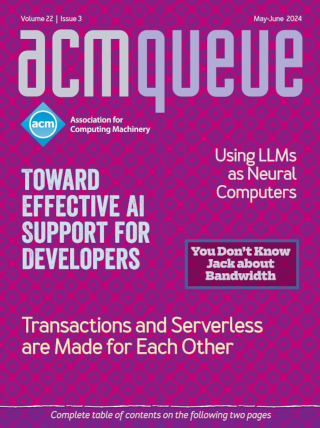
Continuous Delivery Sounds Great, but Will It Work Here?:
It’s not magic, it just requires continuous, daily improvement at all levels.
Continuous delivery is a set of principles, patterns, and practices designed to make deployments predictable, routine affairs that can be performed on demand at any time. This article introduces continuous delivery, presents both common objections and actual obstacles to implementing it, and describes how to overcome them using real-life examples. Continuous delivery is not magic. It’s about continuous, daily improvement at all levels of the organization.
DevOps Metrics:
Your biggest mistake might be collecting the wrong data.
Delivering value to the business through software requires processes and coordination that often span multiple teams across complex systems, and involves developing and delivering software with both quality and resiliency. As practitioners and professionals, we know that software development and delivery is an increasingly difficult art and practice, and that managing and improving any process or system requires insights into that system. Therefore, measurement is paramount to creating an effective software value stream. Yet accurate measurement is no easy feat.
Popping Kernels:
Choosing between programming in the kernel or in user space
In a world in which high-performance code continues to be written in a fancy assembler, a.k.a. C, with no memory safety and plenty of other risks, the only recourse is to stick to software engineering basics. Reduce the amount of code in harm’s way, keep coupling between subsystems efficient and explicit, and work to provide better tools for the job, such as static code checkers and large suites of runtime tests.
Monitoring in a DevOps World:
Perfect should never be the enemy of better.
Monitoring can seem quite overwhelming. The most important thing to remember is that perfect should never be the enemy of better. DevOps enables highly iterative improvement within organizations. If you have no monitoring, get something; get anything. Something is better than nothing, and if you’ve embraced DevOps, you’ve already signed up for making it better over time.
How Is Your Week Going So Far?:
Praise matters just as much as money.
None of us hears "thank you" or "awesome job" enough at work. Being the person who praises other people is an amazing person to be, especially when you follow this formula for making your praise ridiculously effective.
Containers Will Not Fix Your Broken Culture (and Other Hard Truths):
Complex socio-technical systems are hard; film at 11.
We focus so often on technical anti-patterns, neglecting similar problems inside our social structures. Spoiler alert: the solutions to many difficulties that seem technical can be found by examining our interactions with others. Let’s talk about five things you’ll want to know when working with those pesky creatures known as humans.
Toward a Network of Connected Things:
A look into the future of IoT deployments and their usability
While the scale of data presents new avenues for improvement, the key challenges for the everyday adoption of IoT systems revolve around managing this data. First, we need to consider where the data is being processed and stored and what the privacy and systems implications of these policies are. Second, we need to develop systems that generate actionable insights from this diverse, hard-to-interpret data for non-tech users. Solving these challenges will allow IoT systems to deliver maximum value to end users.





